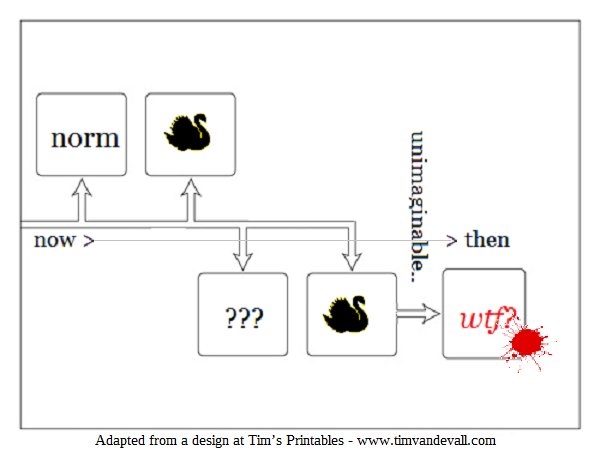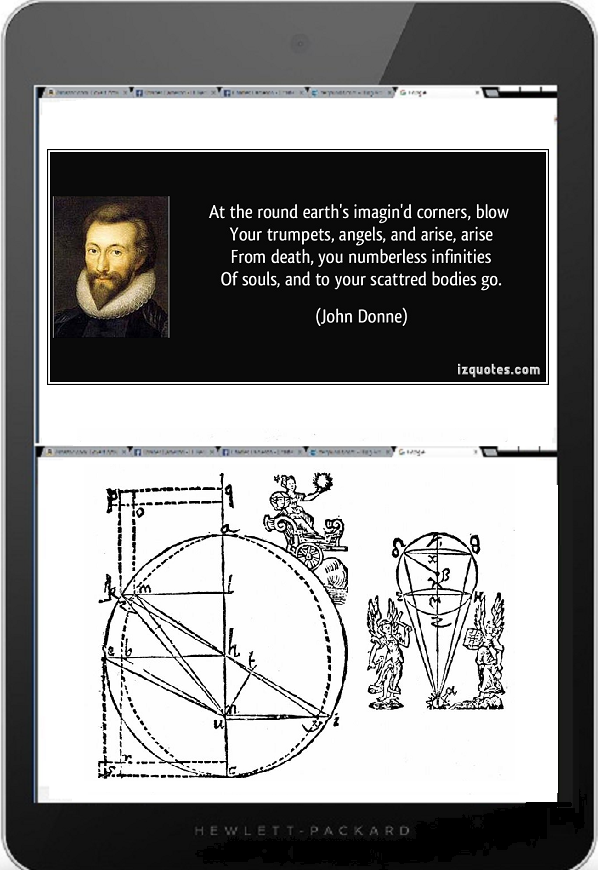Concerning the Future — black swans & white
Sunday, September 25th, 2016[ by Charles Cameron — in concern, yes — and hope ]
.
I know which I’d choose — but I can’t speak for the powers that be (Ephesians 6.12 included).
**
Here’s a paragraph from David Barno and Nora Bensahel, The Future of the Army: Today, Tomorrow, and the Day After Tomorrow:
Some future developments can be predicted, but others will be unexpected and unforeseen. “Black swans” —- unpredictable events with very serious consequences — will be as inevitable then as they have been in the past.105 In 2000, for example, no analyst could have possibly foreseen all of today’s disparate security challenges—the 9/11 attacks, the rise of al-Qaeda and ISIS, a resurgent Russia annexing Crimea and threatening neighbors with force, and China building artificial islands in the South China Sea from which to project power, among others. Unpredicted and unpredictable events will indubitably disrupt sober defense planning and could shift US defense priorities in an instant — especially if there were a nuclear exchange overseas or if a weapon of mass destruction were used against the homeland.
**
I’m somewhat sceptical of the polling methodology used by the Lincoln Leadership Initiative to generate these conclusions reported by The Hill:
Among those who say they will vote for Trump, 48 percent say he’ll create a database to track Muslims? 36 percent say there will be race riots? 33 percent say the government would default on its debt? and 32 percent say Trump would punish his political opponents and authorize internment camps for illegal immigrants.
Only 22 percent of Trump supporters believe he will start a nuclear war.
Whatever the reliability of the poll — and I’ve asked — it seems clear that at least some potential voters believe Donald Trump, if elected president, might use nuclear weapons, perhaps in the fight against ISIS.
I’d call the database, the race riots and the debt default that Barno and Bensahel mentiom black cygnets at best, but the prospect of nuclear war almost qualifies IMO as a full-on black swan — and I’d refer you back to the final sentence of the Barno-Bensahel quote above:
Unpredicted and unpredictable events will indubitably disrupt sober defense planning and could shift US defense priorities in an instant — especially if there were a nuclear exchange overseas or if a weapon of mass destruction were used against the homeland.
**
Barno-Bensahel sat they would consider a nuclear exchange a black swan in their chapter on 2020-2035, whereas Trump’s first term, if he were to be elected president, would barely touch the beginning o0f that range — so that particular black swan, if it is one, might conceivably occur quite soon.
But note that word “conceivable” — a true black swan, to my way of thinking, would be something that hadn’t even occurred as a possibility to forward thinking folks like David Barno — indeed not even, with all due respect, to John Robb.
And Barno-Bensahel predict out to 2040.
**
My own predictive vision as a student of wisdom literature and propecies of various kinds shows me the following timeline:
It goes without saying that I could be wrong — a whiter shade of swan might make all the difference.








